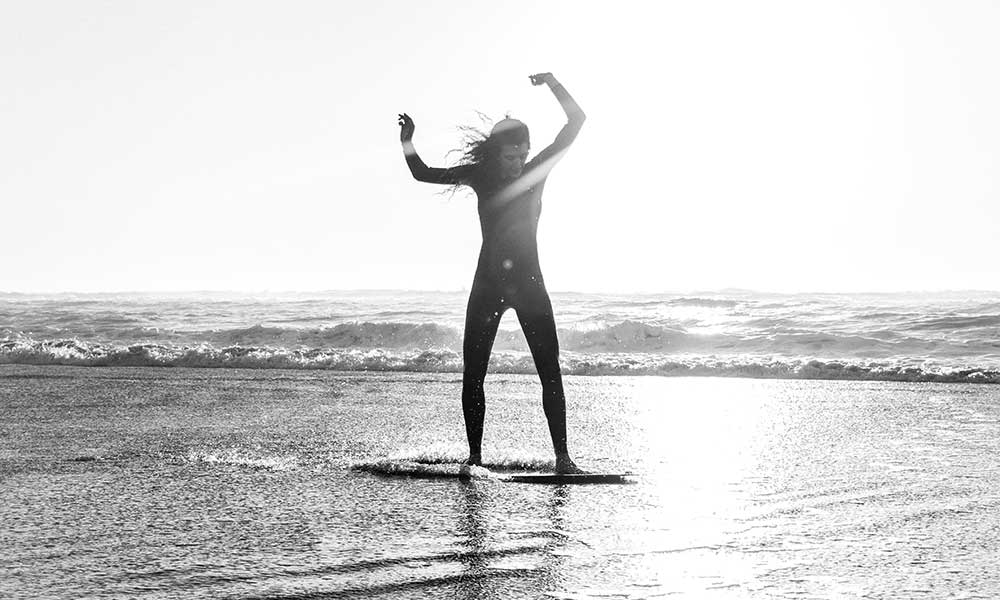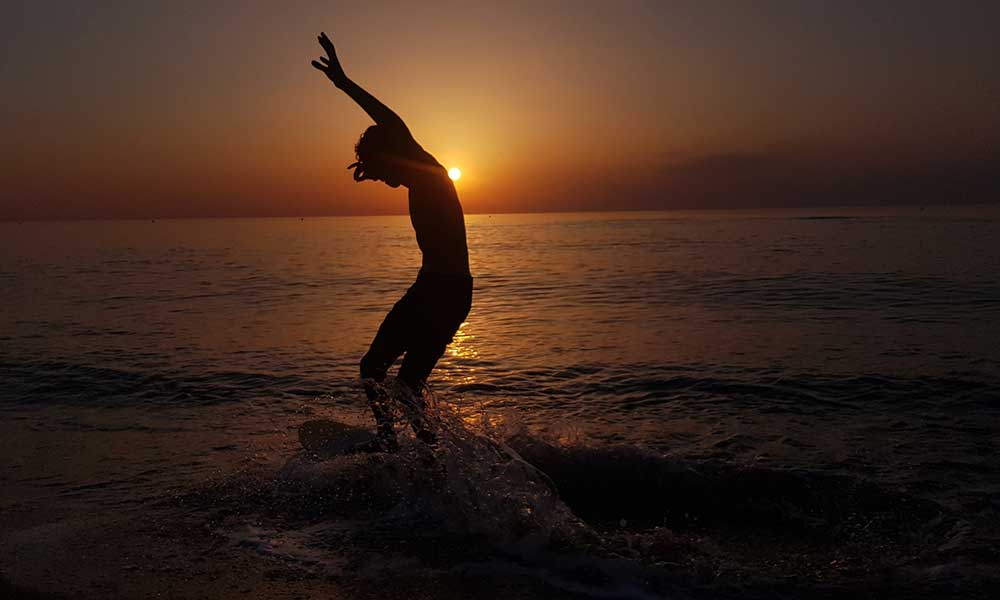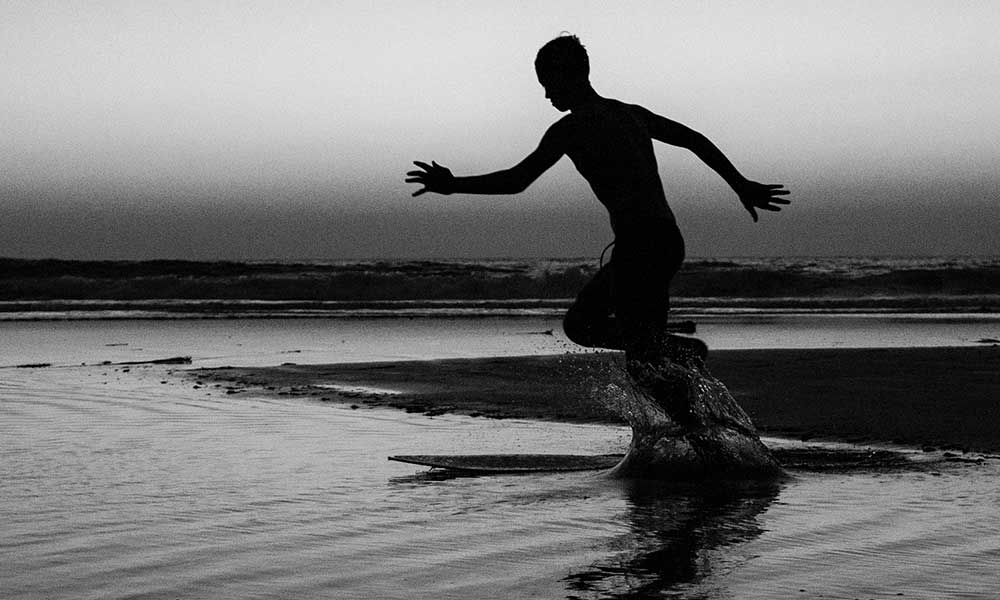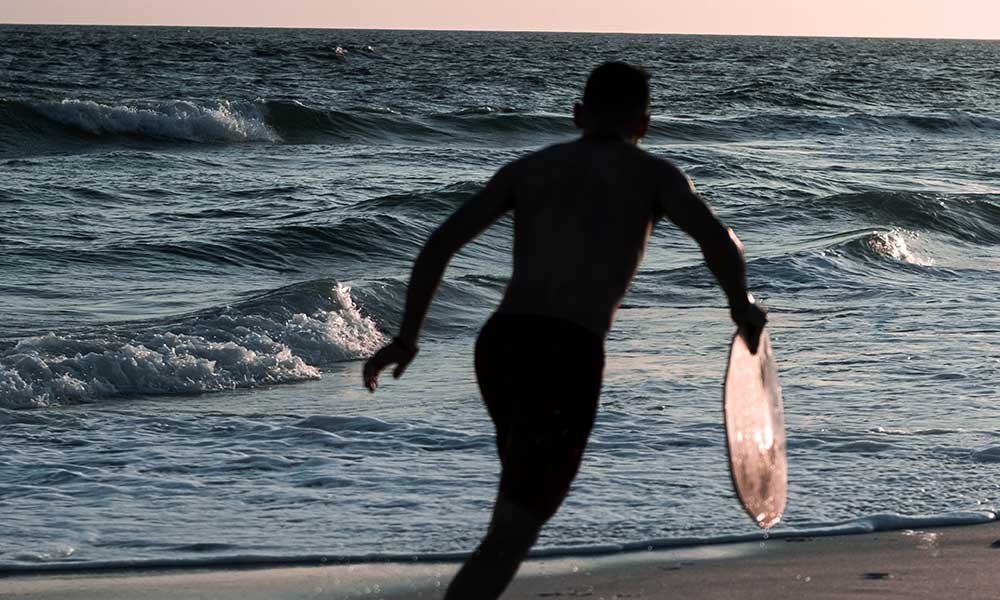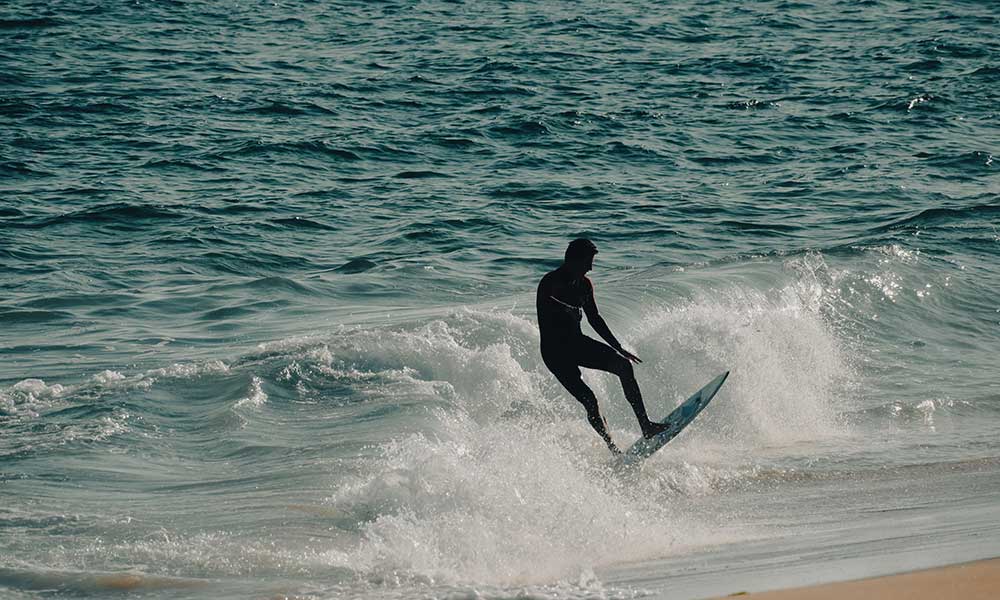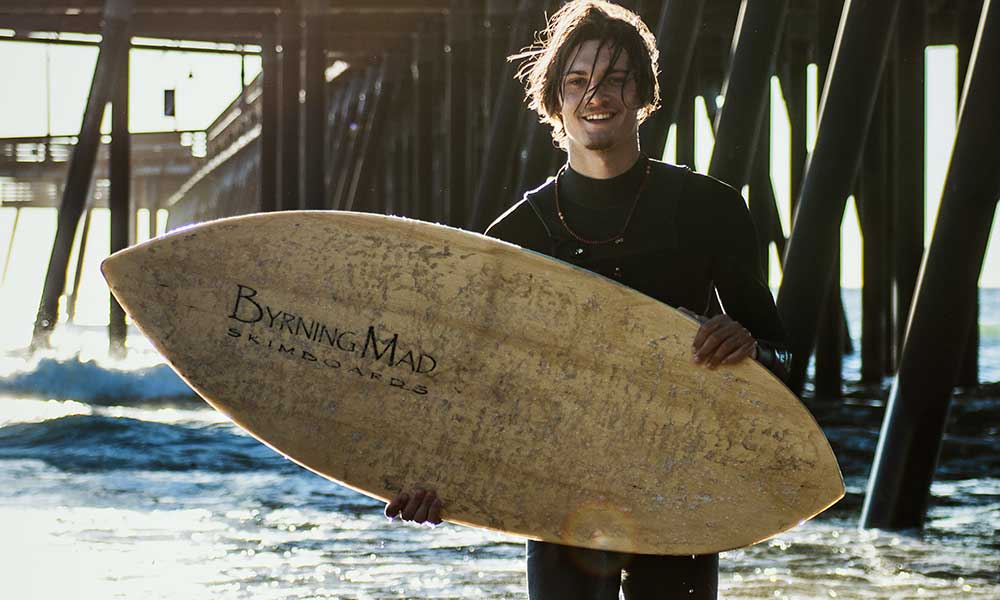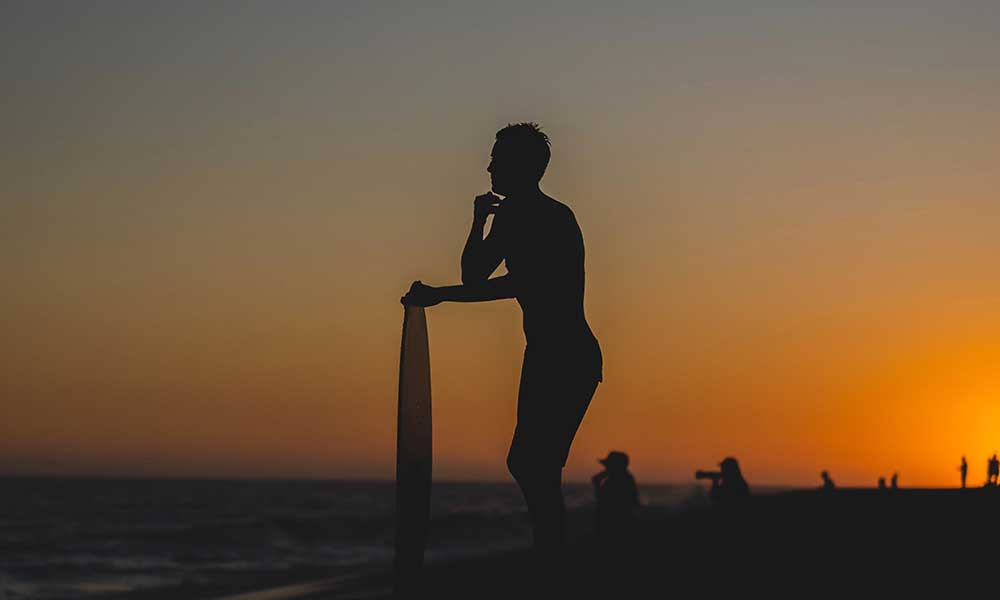Skimboarding is an incredibly fun and accessible activity. It doesn’t require a great deal of equipment and once you learn the basics, there’s no stopping you!
If you’re new to skimboarding, the following guide will help you to make a start.
Buy Your First Skimboard
Any type of small and flat wooden board is suitable if you’re skimboarding, but it’s best to buy a proper skimboard.
Good wooden boards are available for less than $100 and you can find them at your local surf shop or sporting goods store.
Wooden boards are usually cheaper than foam boards and may also offer more durability.
A little further down, we’ll talk about the best skimboards for beginners and discuss the features you should be looking for. But it’s best not to get too caught up in the specifics. Just look for a board that is suitable for your size and weight and is within budget.
Even if it’s a foam board, it doesn’t matter. If you can afford it and you like it, it’s the right board for you.
Try Some Sand Skimming
To begin with, you should stick with sand skimming. You’ll be skimming over flat beach areas and won’t need to venture far from the shore.
Look for an area with smooth and flat sand. There are many top sand skimming beaches in the United States, the best of which are in California, where this sport originated, but you can find skimboarding hotspots all over the world.
Here are some of the best places to skimboard, all of which have some good spots for beginner skimboarders:
- Laguna Beach, California (USA)
- Santa Cruz, California (USA)
- Paradise Beach, California (USA)
- Dewey Beach, Delaware (USA)
- Emerald Isle, North Carolina (USA)
- Anna Maria Island, Florida (USA)
- South Beach, Savary Island (Canada)
- RC Beach, Roberts Creek (Canada)
- Bunsen Lake (Canada)
- Gava, Barcelona (Spain)
- Torcarne Beach, Cornwall (United Kingdom)
- Mother Ivey’s, Cornwall (United Kingdom)
Make Sure You’re Fit and Strong Enough
Skimboarding is not as risky as some other board sports, but it could still cause serious injury if you’re ill-prepared and not in very good shape.
Make sure you’re fit, strong, and in decent condition before you start skimboarding.
If you can’t run, jump, and react quickly, you may struggle with even the most basic skimboarding techniques.
Wait until you’re capable of running in short spurts, maintaining your balance on a slippery board, and jumping before you step foot on your new skimboard.
You should also warm-up before every skimboarding session. Think of it as a tough workout, as that’s essentially what it is.
You wouldn’t start heavy circuit training or high-intensity interval training without a little stretching beforehand, and the same should apply to skimboarding.
Wear Protective Gear and Find Your Dominant Foot
There are two things you need before you start tossing that skimboard onto the sand.
The first is a helmet, as you’re going to be slipping and falling a lot and you need to protect your face and head.
Secondly, you’ll need to learn what your dominant foot is.
If you have any experience with board sports, you’ll already know. The same is true for soccer players.
If not, just pick up a ball and drop-kick it. Try it a couple of times and see which leg you instinctively favor. That leg is your dominant one and should become your back foot on the skimboard.
You can also just put the board on the sand, step on it, and assume the foot position that feels most natural.
Assume the Starting Position
The starting position for sand skimming is to lean forward and hold your skimboard about 6 inches from the ground.
Place one hand on the tail of the board and the other on the rail in the middle. Keep the board flat and make sure it’s roughly parallel to the sand.
If you are right-handed, hold this position so that the water is on your left and the shore is on your right. If you’re left-handed, switch it.
Throw The Board
Wait until the wave washes onto the beach and there is about half an inch of water on the sand.
Throw the board onto the sand just as the wave is going back out to sea and keep it parallel to the shoreline. It doesn’t have to be perfectly straight, but the straighter it is, the longer and smoother your ride will be.
Run Onto the Board
When the board is out in front of you, run onto it. You don’t wait to jump or even hop onto the board, as you’ll just slip and land on your ass or face, making for a painful first introduction to this sport.
Try to keep your pace steady and take the board in your stride. You should only need to take a few strides before getting onto your board.
Lead with your front foot, placing it beyond the middle of the board, and then follow with your back foot.
Control the Board
As the skimboard is moving, keep your knees slightly bent and try to keep your weight centered. Don’t move around too much and always fix your head in the direction you’re going.
For sand skimming, you’ll need to place more pressure on your front foot than your back foot.
Maintain Your Balance
Keep your balance until the board stops moving. It should stop on its own.
You have now completed your first skimboarding experience! But there’s much more to skimboarding than riding in a straight line, and we haven’t even advanced to the waves yet!
Try Wave Skimming
Wave skimming is when things start to get interesting. You can learn tricks and turn more freely, but it’s a little trickier to master.
For wave skimming, simply wave for the wave to break, throw down your board, and attack the wave from a side angle.
Unlike surfing, you’re not paddling out and waiting for those big waves. You’re simply riding those waves out and then back in.
Wait until you reach the crest of the oncoming wave and then shift your weight into the direction that you wish to turn.
Complete a 180-degree turn and then head back to the shore.
Learn Some New Tricks
When you have mastered the basics, it’s time to learn some skimboarding tricks.
Here are some of the best tricks to learn on your skimboard, covering both wave riding and sand skimming tricks:
- Aerial: An aerial is a wave riding trick whereby the skimboarder launches off the top of a wave and then successfully lands on the whitewater or the wave face. It is one of the first tricks you will master as you learn to ride waves on a skimboard.
- Hippy Jump: Ride up to an object on the sand and jump over it while the board goes underneath. Try to land on the board on the other side.
- Fire Hydrant: Place your hand on the nose and kick out your front leg so it looks like a dog urinating on a fire hydrant.
- Grab: Gain some air and then grab the board before landing the trick.
- Kickflip: A trick borrowed from skateboarding that entails kicking the side of the board to spin it around, completing a 360.
- No Comply: Gain speed on the sand and then step off with your front foot before using that foot to spin the board 180 or 360 degrees.
- Body Varial: The rider jumps and spins to switch their stance on the board. This is a good trick for beginner riders to learn as it teaches control and requires great balance.
Is Skimboarding Easy to Learn?
If you have the right skimboard, adequate fitness, and a lot of patience and persistence, you can learn skimboarding eventually. It’s far from an easy sport, but it should be easier to grasp than sports like surfing and skateboarding.
If you don’t have any experience with board sports, stick to sand skimming over shallow water, practice throwing the board until it feels natural, and don’t try anything you’re not comfortable with. As with everything else, the more you practice, the easier it will become.
Can You Practice Skimboarding on Grass?
Although you can practice skimboarding on grass, it needs to be very wet. In fact, you’re unlikely to have any success unless the grass is submerged, with the water covering most of the blades. That way, you can hydroplane across the surface just like you do with sand.
How Big Are Skimboards?
Most skimboards are between 45 and 57 inches long and 17.75 to 23 inches wide. The bigger you are, the bigger the board should be.
The thickness should also be considered. Thicker boards will glide better but provide less control and sharpness when turning. Thinner boards, therefore, are better when you want to perform lots of tricks while thicker boards are best for speed.
What Are the Best Skimboards for Beginners?
As noted above, a beginner skimboard is simply one that is within your price range and looks the part. You don’t want to spend too much time worrying about the specifics because while the exact thickness, length, width, and features can make a difference, you’re unlikely to notice much of a difference as a complete beginner.
If you don’t have any decent surf shops or sporting goods stores near you and prefer to buy online, take a look at our list below. These beginner skimboards are available from Amazon and are surprisingly affordable:
Waveline Neon Wooden Skimboard
The Waveline is a simple but effective beginner skimboard that proves you don’t need to spend big to get a decent board.
It’s a wooden board that is very easy to control and is made for sand skimming. The link below points to the blue board, which comes in at 30 inches. However, there are other options available from the same brand and they are all reasonably priced.
BPS Shaka Skimboard
Another low-cost option, this time with many different traction pad color options. This skimboard is a great beginner option for children and adults. It is made from strong plywood.
Wave Zone Diamond
One of the better fiberglass boards that we have come across, this Wave Zone is as good as it gets for first-time skimmers. It’s built for sand skimming and is handcrafted in the United States. Make sure you check the weight limit and ensure that the size is right for you.
You can learn more about this beginner surfboard by clicking the link below.
Zap LAZER Skimboard (Kids)
A premium skimboard that’s perfect for young riders. The title doesn’t allude to the fact that it’s made for kids, but if you check the bullet points you’ll notice that it has a weight limit of 95 lbs., so keep this in mind if you have this board in your sights.
Victoria Woody Skimboard
A good wooden board with a weight capacity of up to 200 lbs. It’s an entry-level board that is suitable for beginners and can be used for both wave skimming and sand skimming.
Summary: Learn How to Skimboard
Skimboarding is incredibly fun and while it can be frustrating (and occasionally painful) to familiarize yourself with the basics, if you nail those then it’s plain sailing—or skimming—from there.
The most important thing is that you have fun, stay safe, and don’t let yourself get too frustrated. If you fail and fall, just get back on the board and try again!

